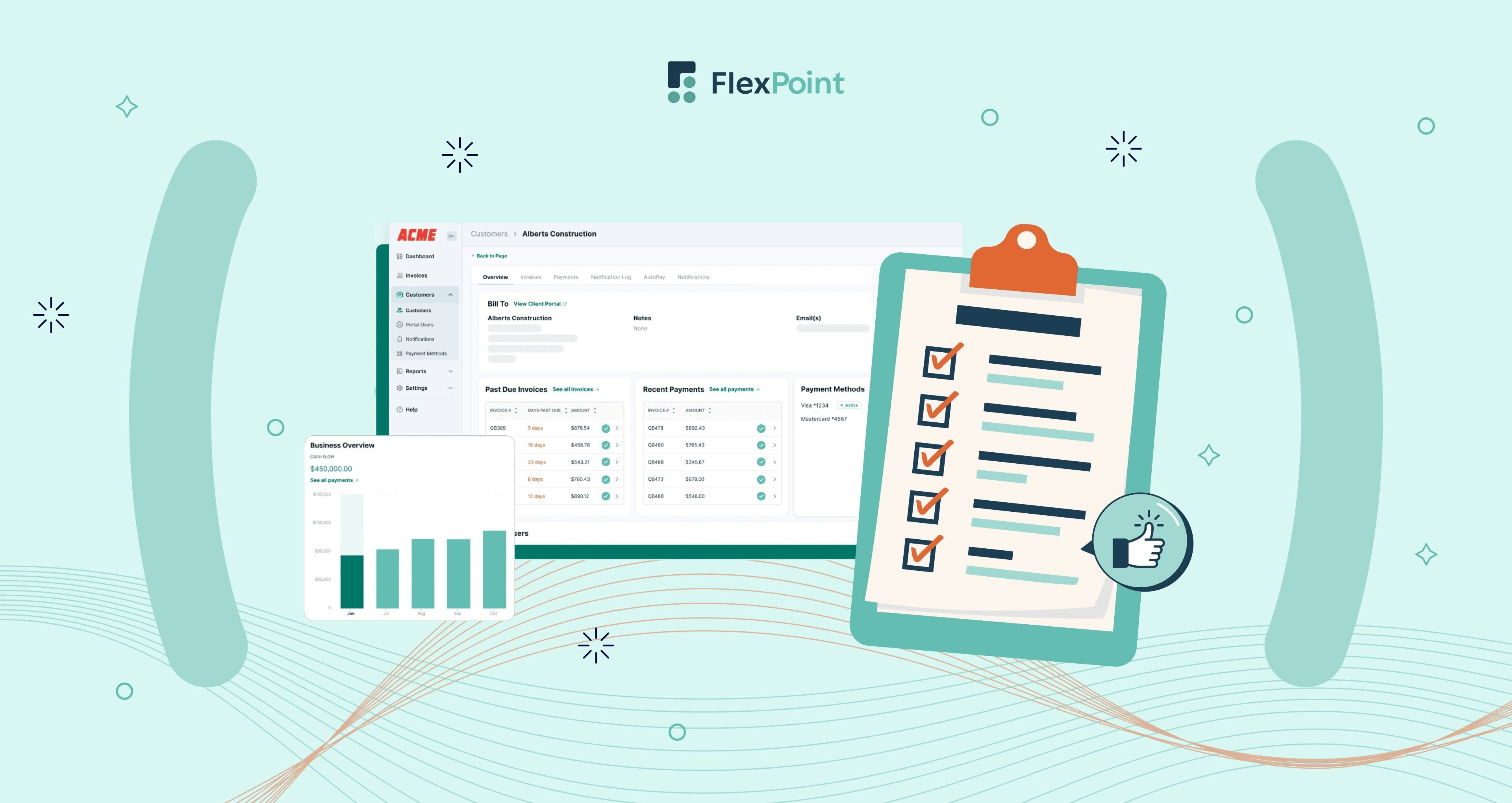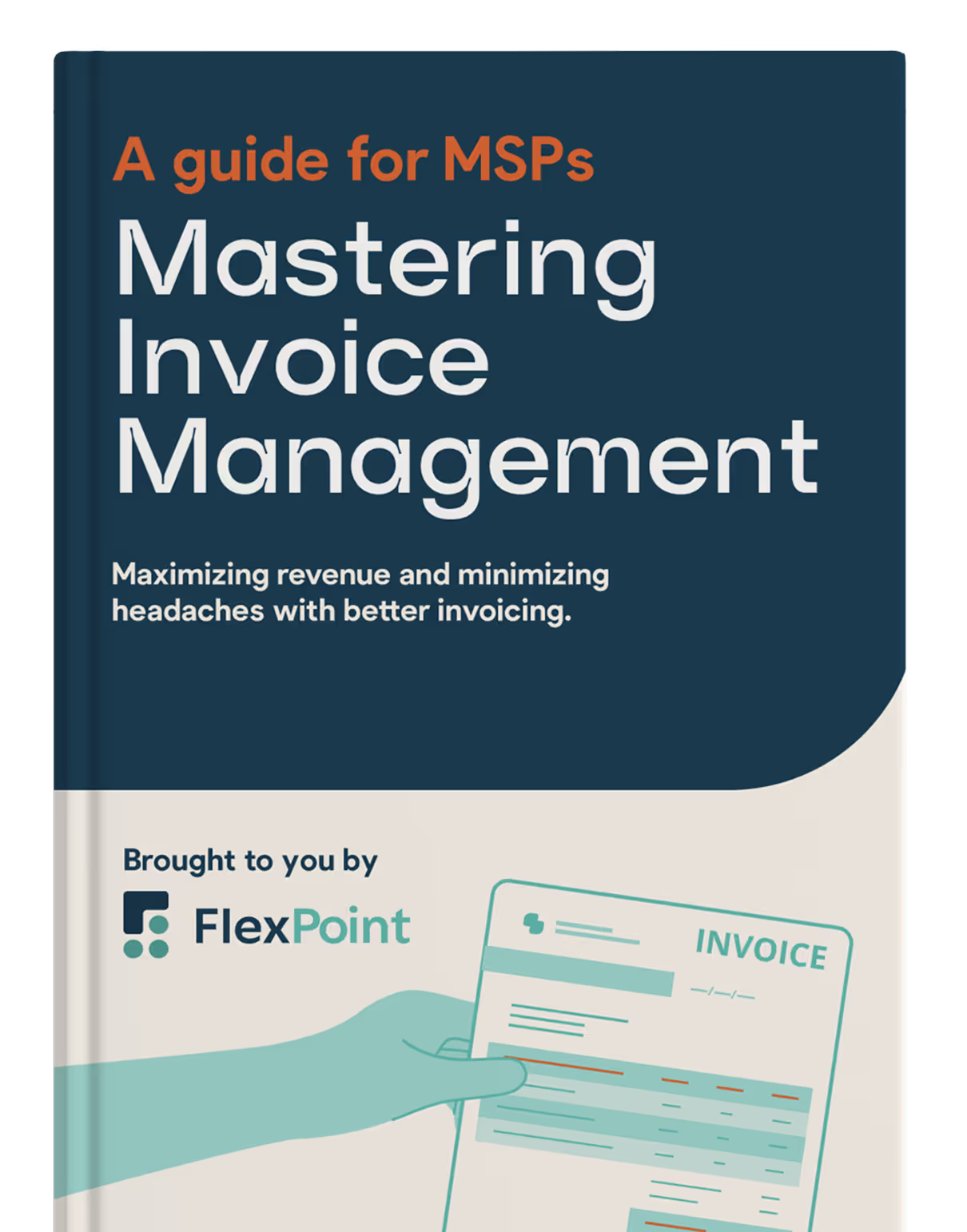The Importance of Integrating MSP Billing with Project Management

According to BluLogix, 5–15% annual revenue losses for MSPs are due to fragmented systems and outdated workflows. MSPs that rely on disconnected systems for project tracking and billing face inefficiencies that negatively impact their bottom line.
MSP services are often complex, long-term, and resource-intensive, so siloed MSP project management and billing can impact business sustainability. The billing process must align with project management workflows and financial systems to ensure accurate invoicing, streamlined operations, and stronger cash flow.
Most managed service providers (MSPs) utilize multiple systems and non-integrated tools to manage various aspects of their operations.
For example, project teams might use one platform for tracking tasks, while the finance team uses another for billing. Without seamless integration, information can become fragmented, causing errors and inefficiencies.
Manual data entry between MSP billing and project management systems can result in missed billable hours, delayed invoices, and budget overruns. It results in a loss of revenue and client trust.
In this article, we will look at how implementing integrated solutions helps align project management with billing processes. We will also share five actionable strategies to enable accurate and timely invoicing while enhancing operational efficiency.
{{toc}}
The Role of Project Management in MSP Billing Efficiency
MSP project management systems help streamline tasks, timelines, resources, and deliverables to deliver IT services seamlessly to all clients. These systems are built to track the complexity of your MSP's work, from assigning engineers to specific tasks to monitoring hours worked and mapping project milestones. The data from MSP project management systems carries significant financial implications and is important in maintaining your MSP's cash flow.
If MSP project management systems are not connected to billing platforms, project updates, time logs, and resource allocations will not be accurately synced, resulting in billing issues.
MSPs using siloed project management and billing systems face the following challenges:
- Revenue Leakage: Billable hours logged by technicians can be overlooked or misreported, resulting in lost revenue. It impacts billing accuracy, revenue, and client trust.
- Invoicing Delays: MSP Finance teams may wait for manual updates from project teams before generating invoices. It extends the billing cycle and slows down cash flow.
- Client Disputes: Inaccurate or vague invoices can lead to disputed invoices, payment delays, and strained client relationships. The clarifications and corrections add to your administrative overhead.
- Legal Implications: MSPs must adhere to compliance requirements, such as PCI DSS and SAQ A. Manually handling and storing data can lead to non-compliance due to data mismanagement, which may result in substantial penalties, fines, or legal action.
- Reduced Efficiency: Manual data entry and reconciliation across systems are tedious and error-prone. According to Workgeist, workers spend 20% of their day gathering data from fragmented systems, which reduces productivity. These divert valuable time and resources, reducing your MSP's efficiency.
- Missed Opportunities: With siloed systems, financial reporting may be delayed or inaccurate due to data inconsistency. It can lead to missed opportunities for service improvement, growth, and expansion.
- Reputation Damage: Delays and errors in invoicing can damage your MSP's reputation and brand image. Clients may consider your MSP unreliable or unprofessional, which could influence their decision to continue doing business.
By implementing an integrated system for project management and invoicing, you can centralize all your operational data and ensure billing accuracy. It offers the following benefits for your MSP:
- Time Savings: By automating data syncing between MSP project management and billing systems, you can reduce the time spent on manual data entry. Your team can redirect the time saved toward improving client experience and growing your business.
- Better Budget Tracking: Integration ensures that project budgets and expenses are consistently monitored. Eliminating discrepancies enables you to maintain control over your MSP's project costs and resource allocation.
- Improved Visibility: A centralized system offers real-time insights into project progress, resource allocation, and financial performance. You can use the insights for informed decision-making, proactive service delivery, and project management.
- Streamlined Workflow: Integration creates a seamless flow from project task completion to invoice creation, ensuring that accurate invoices are generated as soon as the task is completed. This improves your billing cycles and cash flow.
For example, when a technician marks a milestone as complete, an integrated system instantly generates an invoice based on the data from the time-tracking tool. It helps align service delivery with revenue collection.
{{ebook-cta}}
5 Strategies and Best Practices for Integrating MSP Billing with Project Management
MSPs need speed, accuracy, and visibility across financial operations to maintain profitability. As your client base expands and projects become more complex, integrating billing with project management becomes a necessity.
MSPs must streamline billing operations by eliminating redundant data entry processes and preventing data duplication to ensure efficient and accurate billing. Integrating with an automated billing platform ensures that every task, milestone, and resource usage is accounted for in the billing process.
Here are five proven strategies for integrating MSP billing with project management:
1. Sync Time and Task Tracking with Billing Systems
MSPs with manual workflows depend on service technicians and project teams to accurately record hours spent on specific tasks. The data is then manually entered into a billing system to convert it into billable line items. Manual intervention leads to delays and errors in data entry.
Integrating time entries and task data from project management systems into the billing workflow enhances billing accuracy. MSP billing automation platforms, such as FlexPoint, streamline the billing process by automating the capture of billable work and enabling real-time invoice generation. By eliminating the reliance on manual data entry, errors are minimized and the risk of missed charges is reduced.
By seamlessly integrating with PSA, project management, and time-tracking systems, billing automation platforms ensure that every logged hour, completed task, and achieved milestone is verified before billing. The integration ensures accurate billing by matching the pricing rules of each line item with the corresponding Service Level Agreements (SLAs). Billing transparency helps build trust with clients and strengthens business relationships.
2. Automate Billing Based on Milestones and Deliverables
MSPs managing complex projects, such as IT infrastructure upgrades, security deployments, or multi-site rollouts, find milestone-based billing helpful to maintain cash flow. It aligns client payments with project progress, ensuring a steady flow of revenue throughout the project lifecycle.
However, manually managing milestone billing can be an administrative burden for MSPs. Project managers must notify finance teams when deliverables are met using spreadsheets or by sending emails. It slows down invoicing and increases the risk of missing billing events.
Integrated billing platforms enable MSPs to create automated billing triggers linked to project management milestones from a PSA tool. For example, once a server is deployed or an onboarding phase is completed and marked in the PSA, an invoice is automatically generated. It eliminates the back-and-forth between departments and ensures that clients are billed as soon as work is delivered.
3. Centralize Project, Resource, and Billing Data for Full Visibility
Without a unified data management system, project managers and finance teams may have access to different versions of the same information.
While a project may seem profitable based on resource data in the project dashboard, the billing team might identify cost overruns due to delayed or incomplete invoices. The lack of alignment can lead to operational challenges, such as underbilling clients, underestimating project budgets, or overlooking scope creep.
Centralizing data in a single unified dashboard provides MSPs with a comprehensive view of financial performance across all projects.
An integrated billing platform with an intuitive dashboard allows project management and finance teams to see billing status, outstanding invoices, and profits all in one place. MSPs can use the insights for better decision-making, faster reconciliation, and more accurate forecasting for future projects.
Integrating MSP billing and project management tools helps improve cross-functional collaboration. Your MSP's project managers and finance leaders can regularly review these dashboards and collaborate to ensure that projects are on track and billing is accurate. They can also use the data to identify areas for improvement in project management processes, such as streamlining time tracking, setting achievable milestones, and invoicing procedures.
4. Use Project Insights to Improve Budget Forecasting and Planning
According to ForwardAI, 80% of businesses fail due to poor cash flow forecasting. MSPs need historical data and insights from past projects to identify patterns and trends that inform future budget planning. When billing information is disconnected from project timelines and effort, financial forecasting becomes a matter of guesswork. It can have serious consequences for MSPs, including underestimating costs, misallocating resources, and resulting in lost profitability.
Integrated billing and project management systems help MSPs identify trends in scope creep, underutilized resources, or overservicing. Using real-time and historical project data, you can forecast accurately. By consolidating inputs such as hours worked, milestones achieved, costs incurred, and invoices sent into a single platform, you can enhance revenue forecasting and gain a deeper understanding of project performance trends.
For instance, if you know that cloud migration projects consistently run over budget due to underestimated labor hours, you can adjust your pricing and resourcing strategy.
Similarly, predicting cash inflow from project milestones helps optimize working capital and manage payroll effectively.
Using an integrated billing automation system helps you to analyze your MSP's cash flow and monitor deviations from forecasted budgets. You can use the insights to make real-time adjustments rather than addressing them later.
5. Eliminate Duplicate Workflows Across Billing and Project Teams
MSPs with finance and project teams operating in silos have time-consuming and error-prone duplicate workflows.
Project and account managers manually export time logs, while finance teams re-enter the data into invoicing tools. Multiple emails are exchanged to confirm the details of what has been billed.
This manual process consumes valuable time and creates unnecessary inefficiencies, potentially leading to billing discrepancies and excessive payment reminders that can impact client satisfaction and revenue collection.
According to Harvard Business Review, companies lose $50,000 per employee each year due to lost billable hours. MSPs with duplicate workflows face financial losses due to low employee productivity and high customer dissatisfaction. You should standardize workflows across teams by using a single source of truth to track task progress and billable data.
An integrated billing platform eliminates redundant workflows by synchronizing data between PSA and finance systems in real-time. It ensures that project teams can focus on delivery while finance teams handle billing with accurate data. It also reduces billing disputes with clients by ensuring that invoices accurately detail the services provided and milestones accomplished.
Conclusion: Driving Operational and Financial Success with Billing-Project Integration
MSP growth relies not only on delivering exceptional services but also on ensuring that every hour, task, and milestone is effectively translated into revenue. Integrating billing with project management is essential to minimize invoicing delays, enhance budget accountability, and drive overall project profitability.
MSPs need to move away from disconnected tools that cause inefficiencies, such as missed billable hours, errors, and strained client relationships.
Siloed systems create blind spots between service delivery and billing, leading to delayed payments and internal friction between project and finance teams. Integrated MSP billing project management systems streamline workflows and eliminate these costly issues.
FlexPoint is an MSP-centric solution featuring a user-friendly dashboard that visualizes your cash flow and generates invoices for tracked hours.
Alternatively, suppose you choose to invoice directly from your PSA (such as ConnectWise, AutoTask, SuperOps, or HaloPSA) or accounting software (such as QuickBooks Online, QuickBooks Desktop, or Xero). In that case, the bi-directional sync ensures that financial data is automatically updated and reconciled in both systems. The automation capabilities sync project data directly into the billing process, sending accurate and timely invoices at scale.
FlexPoint provides real-time insights into project and financial performance, enabling MSPs to forecast revenue and manage operations with ease. For example, SkyCamp Technologies, an Ohio-based MSP, integrated FlexPoint with its existing QuickBooks system to save 8 hours per month on its billing operations.
SkyCamp previously managed multiple platforms, leading to time-intensive manual reconciliations. By implementing FlexPoint, they achieved end-to-end automation, enabling the real-time synchronization of invoices and payments, which resulted in a 30% faster payment collection process.

Your MSP team can also benefit from similar time-saving, cost-efficient, and automated billing workflows using FlexPoint.
Streamline your MSP's billing and project management processes with FlexPoint.
Automate invoicing, improve budget tracking, and ensure every billable hour is accounted for.
Schedule a demo to see how FlexPoint can enhance your financial workflows.
{{demo-cta}}
Additional FAQs: MSP Billing and Project Management
{{faq-section}}










